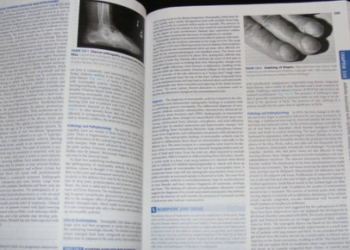Rhinoplasty, commonly known as a nose job, is one of the most sought-after cosmetic surgeries worldwide. Whether for aesthetic enhancement or medical reasons, rhinoplasty offers a solution to those looking to reshape or reconstruct their noses. But before delving into the procedure itself, understanding the importance of selecting a skilled rhinoplasty surgeon is crucial. A professional with the right expertise can ensure that the results are both natural-looking and in harmony with the patient’s facial structure.
What is Rhinoplasty?
Rhinoplasty is a surgical procedure that reshapes the nose to achieve a more balanced and pleasing appearance. While many people seek rhinoplasty to enhance their looks, others may require it for medical purposes, such as correcting breathing issues or repairing damage from an injury. This surgery is intricate, and the success of the procedure heavily depends on the surgeon’s knowledge, experience, and skill.
The Importance of a Skilled Surgeon
When considering rhinoplasty, selecting the right surgeon is one of the most critical decisions a patient can make. A qualified rhinoplasty surgeon brings a deep understanding of both the aesthetic and functional aspects of the nose. The surgeon’s role extends beyond making the nose look appealing; they also ensure that the nasal passages remain functional post-surgery.
An experienced surgeon will take the time to listen to the patient’s needs, study their facial features, and recommend the best approach for achieving the desired results. Every nose is unique, and what may work for one person may not work for another. This is why a tailored approach is essential.
Who Should Consider Rhinoplasty?
Rhinoplasty can benefit a wide range of individuals for both cosmetic and medical reasons. Those who are unhappy with the size, shape, or alignment of their noses often turn to this surgery to boost their confidence. Others may opt for rhinoplasty due to functional issues, such as breathing difficulties, congenital deformities, or trauma from accidents.
Some of the common issues rhinoplasty can address include:
- A nose that is too large or small in proportion to the face
- A bump or depression on the nasal bridge
- A crooked nose
- Enlarged or wide nostrils
- A bulbous or droopy nasal tip
- Nasal asymmetry
Types of Rhinoplasty
There are different types of rhinoplasty surgeries, each tailored to specific needs:
1. Closed Rhinoplasty
In a closed rhinoplasty, all incisions are made within the nostrils, making it a less invasive option. There are no visible scars, and recovery time is generally shorter. This approach is often used for patients requiring minor adjustments to the nose.
2. Open Rhinoplasty
Open rhinoplasty involves making an incision on the columella (the tissue that separates the nostrils) to give the surgeon better access to the nose’s structure. While this technique may leave a small scar, it is usually unnoticeable. This method is often used for more complex cases, such as significant reshaping or reconstruction.
3. Functional Rhinoplasty
This type of rhinoplasty focuses on improving nasal function, particularly for patients who have difficulty breathing. While cosmetic changes may be made, the primary goal is to correct structural issues within the nose that obstruct airflow.
4. Revision Rhinoplasty
Patients who have undergone a previous rhinoplasty but are unhappy with the results or have experienced complications may opt for revision rhinoplasty. This procedure is more complex than primary rhinoplasty, as it often involves correcting both functional and cosmetic issues from the first surgery.
The Consultation Process
Before undergoing rhinoplasty, patients typically have a consultation with their surgeon to discuss their goals, medical history, and expectations. During this consultation, the surgeon may use imaging software to show potential results, allowing the patient to visualize the changes beforehand.
Additionally, the surgeon will examine the patient’s nose, discuss the risks and benefits of the procedure, and explain the steps involved in surgery. This is also the time to ask questions and voice any concerns.
The Procedure
Rhinoplasty is usually performed under general anesthesia, and the surgery can take anywhere from one to three hours, depending on the complexity of the case. During the procedure, the surgeon carefully reshapes the cartilage and bone to achieve the desired appearance while maintaining or improving the nose’s function.
If necessary, cartilage grafts may be taken from the patient’s ear or ribs to support the structure of the nose. Once the desired changes have been made, the surgeon will close the incisions and place a splint on the nose to protect it during the healing process.
Recovery and Aftercare
Recovery from rhinoplasty varies depending on the individual and the type of surgery performed. Most patients can return to normal activities within two weeks, although strenuous exercise should be avoided for several months.
During the first few days post-surgery, patients may experience swelling, bruising, and mild discomfort. It is essential to follow the surgeon’s post-operative care instructions, which typically include:
- Keeping the head elevated while sleeping to reduce swelling
- Avoiding any pressure on the nose
- Taking prescribed medications to manage pain and reduce the risk of infection
- Attending follow-up appointments to monitor healing progress
Swelling can take several months to fully subside, hair transplant clinic in india and the final results of rhinoplasty may not be visible for up to a year.
Risks and Considerations
As with any surgery, rhinoplasty comes with risks. Some potential complications include infection, bleeding, scarring, and difficulty breathing. In rare cases, patients may be dissatisfied with the outcome, requiring revision surgery.
To minimize risks, it’s crucial to choose a board-certified surgeon with extensive experience in rhinoplasty. Patients should also have realistic expectations about the results. While rhinoplasty can significantly enhance a person’s appearance, it’s essential to remember that perfection may not always be achievable.
Final Thoughts
Rhinoplasty is a transformative procedure that can improve both the appearance and function of the nose. Whether you’re seeking a cosmetic change or addressing a medical concern, the expertise of a skilled rhinoplasty surgeon can make all the difference in achieving your desired outcome. By thoroughly researching surgeons, having a clear understanding of the procedure, and setting realistic expectations, you can ensure that your rhinoplasty journey is a positive and rewarding experience.













